Snow Joe 24V-X4-SB24-CT Handleiding
Snow Joe
Sneeuwblazer
24V-X4-SB24-CT
Bekijk gratis de handleiding van Snow Joe 24V-X4-SB24-CT (68 pagina’s), behorend tot de categorie Sneeuwblazer. Deze gids werd als nuttig beoordeeld door 65 mensen en kreeg gemiddeld 5.0 sterren uit 33 reviews. Heb je een vraag over Snow Joe 24V-X4-SB24-CT of wil je andere gebruikers van dit product iets vragen? Stel een vraag
Pagina 1/68

1
A Division of Snow Joe, LLC
OPERATOR’S MANUAL
EN
R
Model 24V-X4-SB24-CT Form No. SJ-24V-X4-SB24-CT-880E-M
CORDLESS SNOW BLOWER – TOOL ONLY
96V MAX* | 24-INCH | SELF-PROPELLED | 2-STAGE
Original instructions.
© 2022 Snow Joe, LLC. All rights reserved.
*Generates 96V max with four 24V lithium-ion batteries. Initial no-load voltage, per
fully charged battery, peaks at 24V. Nominal voltage under typical load is 21.6V.
SAVE THESE INSTRUCTIONS
IMPORTANT!
Safety Instructions
All Operators Must Read These
Instructions Before Use
Read all instructions before using this snow blower. Basic
safety precautions should always be followed to reduce the
risk of re, electric shock and personal injury.
General Safety
m
WARNING!
This machine is not intended for use
by children or by unassisted, unsupervised persons whose
physical, sensory or mental capabilities prevent them from
using it safely. Children should be supervised to ensure that
they do not play with the machine.
Before using your snow blower, please check it carefully for
any defects. If you nd any, do not use it. Instead, contact your
authorized Snow Joe® + Sun Joe®
dealer or call the Snow Joe ®
+ Sun Joe® customer service center at 1‑866‑SNOWJOE
(1‑866‑766‑9563).
m
WARNING!
When using the snow blower, basic safety
precautions should always be followed to reduce the risk of
personal injury. These include:
• Stayalert–Watch what you are doing. Use common
sense. Do not operate the snow blower when you are
tired or under the inuence of drugs, alcohol, or other
medication.
• Dressproperly–Do not wear loose clothing or jewelry
as such articles can become caught in moving parts. Tie
up long hair. Protective gloves and non‑slip footwear are
recommended when working outdoors.
• Usage–This snow blower is intended for use on paved
surfaces. Do not use on gravel, stone or other unpaved
surfaces. Do not use this snow blower for any job except
for what it is intended for.
• Personalprotectiveequipment–Always wear safety
glasses while operating the snow blower.
• Donotforcethesnowblower–Use the snow blower
at the rate for which it was designed to ensure optimal
performance and safe operation.
• Donotoverreach–Keep proper footing and balance at
all times. Watch for uneven surfaces and do not overreach.
In case you fall or collide with the snow blower, inspect the
unit for any damages or cracks. When stepping backwards,
be careful to avoid obstacles behind you.
• Movingparts–Keep your face, hair, clothing, hands,
and feet away from moving parts. All guards and safety
attachments must be installed properly before using the
machine. Shut o and disconnect the battery packs before
touching any parts other than the handles and switch.
m
WARNING!
If the snow blower strikes any object,
follow these steps:
1. Stop the snow blower and remove the battery packs.
2. Inspect for damage.
3. Repair any damage before restarting and operating the
snow blower.
m
WARNING!
Always disengage the triggers, and
disconnect the battery packs; wait for all movement to
stop before making any adjustments, inspecting, servicing,
changing accessories or cleaning the snow blower. Any such
operation should be performed after rotating parts inside
the snow blower stop completely. Such preventive safety
measures reduce the risk of starting the machine accidentally.
m
WARNING!
When replacing any parts, you must strictly
observe the instructions and procedures described in this user
manual. Special care should be paid to any rubber parts, since
these parts may increase the engine load and decrease its
mechanical power if damaged.
m
WARNING!
If you notice that the snow blower is not
running properly or hear abnormal sounds from the engine
when it is in use, immediately stop the machine, disconnect the
battery packs, and contact Snow Joe® + Sun Joe® customer
service center at 1‑866‑SNOWJOE (1‑866‑766‑9563).
Work Area Safety
• Workarea–Always inspect the area where the machine is
to be used and operate it in a well‑lit environment.
• Keepbystandersaway–All bystanders and pets should
be kept a safe distance away from the work area.

2
Maintenance+Storage
m
WARNING!
Do not use detergents, acids, alkaline
solutions, bleaches or solvents such as acetone to clean your
snow blower. These substances may damage the plastic parts
of the machine.
• Storeindoors–When not in use, the machine should be
stored indoors in a dry place inaccessible by children.
• Inspectbeforeuse–Visually inspect for any loose
fasteners or worn, missing or damaged parts. Make sure all
fasteners are tight to assure the machine is in safe working
condition.
Battery&Charger
Safety Instructions
NOTE: This unit is the tool only. The battery and the charger
are not included. They must be purchased separately.
Model 24V‑X4‑SB24‑CT is compatible with the 24V iON+
System batteries and chargers. See page 19 for more
information.
We pay a great deal of attention to the design of every battery
pack to ensure that we supply you with batteries that are safe,
durable and have a high energy density. The battery cells have
a wide range of safety devices. Each individual cell is initially
formatted and its electrical characteristic curves are recorded.
This data is then used exclusively to assemble the best
possible battery packs.
Despite all the safety precautions, caution must always be
exercised when handling batteries. The following points must
be obeyed at all times to ensure safe use. Safe use can only
be guaranteed if undamaged cells are used. Incorrect handling
of the battery packs can cause cell damage.
IMPORTANT! Analyses conrm that incorrect use and poor
care of high‑performance batteries are the main factors
responsible for product damage and/or personal injury.
m
WARNING!
Use only approved replacement batteries;
other batteries may damage the machine and cause it to
malfunction, which can lead to serious personal injury.
m
WARNING!
Do not use a battery pack or machine that
is damaged or modied. Damaged or modied batteries may
exhibit unpredictable behavior resulting in re, explosion or risk
of injury.
Have your battery packs serviced by a qualied repair person
using only identical replacement parts. This will ensure that the
safety of the battery packs is maintained.
m
CAUTION!
To reduce the risk of injury, use only ocial
24V iON+ designated chargers with the 24V iON+ battery
packs. The use of other batteries or chargers poses a risk of
re, personal injury and damage. Do not modify or attempt to
repair the machine or the battery packs except as indicated in
the instructions for use and care. Do not wire a battery pack
to a power supply or car cigarette lighter, as such misuse will
permanently disable or damage the battery packs.
m
WARNING!
To reduce the risk of electric shock,
always unplug the charger before performing any cleaning
or maintenance. Do not allow water to ow into the charger.
Use a Ground Fault Circuit Interrupter (GFCI) to reduce shock
hazards.
• Avoiddangerousenvironments–Do not charge the
battery packs in rain, snow or in damp or wet locations. Do
not use the battery packs or chargers in the presence of
explosive atmospheres (gaseous fumes, dust or ammable
materials) because sparks may be generated when inserting
or removing the battery packs, which could lead to a re.
• Chargeinawell-ventilatedarea–Do not block the
charger vents. Keep them clear to allow for proper
ventilation. Do not allow smoking or open ames near a
charging battery pack. Vented gases may explode.
NOTE: The safe temperature range for the batteries are
41°F (5°C) to 105°F (40.5°C). Do not charge the batteries
outside in freezing weather; charge it at room temperature.
• Maintainchargercord–When unplugging the charger, pull
the plug, not the cord, from the receptacle to reduce the
risk of damage to the electrical plug and cord. Never carry
the charger by its cord or yank it by the cord to disconnect
it from the receptacle. Keep the cord away from heat, oil
and sharp edges. Make sure the cord will not be stepped
on, tripped over or subjected to damage or stress when the
charger is in use. Do not use the charger with a damaged
cord or plug. Replace a damaged charger immediately.
• Donotuseanextensioncordunlessitisabsolutely
necessary–Using the wrong, damaged or improperly
wired extension cord poses a risk of re and electric shock.
If an extension cord must be used, plug the charger into a
properly wired 16 gauge or larger extension cord with the
female plug matching the male plug on the charger. Make
sure that the extension cord is in good electrical condition.
• Donotexposethetoolorbatterypackstore–
Exposure to re or temperatures above 265°F (130°C) may
cause the battery packs to explode, causing personal injury
or damage. Toxic fumes and materials are created when
battery packs are ignited.
• Checktheratedinputforthechargerbeforeusing–
The charger must be plugged into an appropriate
receptacle.
• Useonlyrecommendedattachments–Use of an
unapproved attachment may result in risk of re, electric
shock or personal injury.
• Donotcrush,dropordamagebatterypacks–Do not
use the battery packs or chargers if they have sustained a
sharp blow, been dropped, run over or have been damaged
in any way (i.e. pierced with a nail, hit with a hammer,
stepped on, etc.).

3
• Donotdisassemble– Incorrect reassembly may pose
a serious risk of electric shock, re or exposure to toxic
battery chemicals. If the batteries or chargers are damaged,
contact an authorized Snow Joe® + Sun Joe® dealer or
call the Snow Joe® + Sun Joe® customer service center at
1‑866‑SNOWJOE (1‑866‑766‑9563) for assistance.
• Batterychemicalscauseseriousburns–Never let a
damaged battery pack contact the skin, eyes or mouth.
If damaged, battery chemicals will react violently with air.
Use rubber or neoprene gloves to safely dispose of the
battery. If skin is exposed to battery chemicals, wash the
aected area with soap and water. If eyes are exposed
to battery chemicals, immediately ush with water for 20
minutes and seek medical attention. Remove and dispose
of contaminated clothing.
• Riskofshortcircuit–A battery pack will short circuit if
a metal object makes a connection between the positive
and negative contacts on the battery pack. Do not place a
battery pack near anything that may cause a short circuit,
such as paperclips, coins, keys, screws, nails and other
metallic objects. A short‑circuited battery pack poses a risk
of re and severe personal injury.
• Storeyourbatterypacksandchargersinacool,dry
place– Ideally, store the battery packs at 59°F (15°C) and
charged to at least 40%. Do not store the battery packs or
charger where temperatures may exceed 105ºF (40.5ºC),
such as in direct sunlight or inside a vehicle, or where
temperatures may drop below 41°F (5°C).
NOTE: Prevent the battery packs from freezing. Battery
packs that were stored below 32°F (0°C) for more than 60
minutes must be discarded.
• BatteryAging–Lithium‑ion batteries are subject to a
natural aging process. A battery pack must be replaced at
the latest when its capacity falls to just 80% of its capacity
when new. Weakened cells in an aged battery pack are no
longer capable of meeting the high power requirements
needed for the proper operation of your tool, and therefore
pose a safety risk.
• Donotexhaustivelydischargethebatterypacks–
A complete discharge will damage the battery cells. The
most common cause of exhaustive discharge is lengthy
storage. Stop working as soon as the performance of a
battery falls noticeably or the electronic protection system
triggers. For optimum battery performance, charge the
battery packs frequently. Place the battery packs in storage
only after it has been fully charged.
• Donotoverloadthebatterypacks–Protect the tool and
batteries from overloading. Overloads will quickly result in
overheating and cell damage inside the battery housing
even if it is not apparent externally. For safety reasons, the
integrated protective cuto will activate to switch o the
equipment. After regular use, allow the battery packs to
cool to room temperature before recharging it.
IMPORTANT! Do not attempt to turn on the tool if the
protective cuto has been activated. This may damage the
battery packs.
• Outletvoltage– Please check the data marked on the
rating label of the battery charger. Be sure that the voltage
of the power supply matches that marked on the rating
label. Never connect it to a dierent mains voltage. Never
modify the plug in any way. Do not use any adapter plugs
with grounded tools.
• Donotoverchargebatterypacks–Unplug the chargers
when not in use. Frequently overcharging the battery packs
will result in cell damage. Do not leave batteries charging
for days on end.
• Batterypackabnormalities–Do not use batteries that
have suered swelling or deformation or those that exhibit
other atypical symptoms (gassing, hissing, cracking, etc.).
• Electrostaticdischarge–When handling batteries, be
wary of electrostatic charge. Electrostatic discharges can
damage the electronic protection system and the battery
cells. To avoid electrostatic discharges, never touch the
battery terminals.
Product specificaties
| Merk: | Snow Joe |
| Categorie: | Sneeuwblazer |
| Model: | 24V-X4-SB24-CT |
Heb je hulp nodig?
Als je hulp nodig hebt met Snow Joe 24V-X4-SB24-CT stel dan hieronder een vraag en andere gebruikers zullen je antwoorden
Handleiding Sneeuwblazer Snow Joe

27 Februari 2024

3 Augustus 2023

16 Juni 2023

16 Juni 2023

12 Juni 2023

29 Mei 2023

26 Mei 2023

25 Mei 2023

21 Mei 2023

14 Mei 2023
Handleiding Sneeuwblazer
- Meec Tools
- Einhell
- Hecht
- Biltema
- DJPower
- Worx
- Toro
- Yard Force
- Power Craft
- Al-ko
- Cocraft
- Ryobi
- Eliet
- Troy-Bilt
- Yato
Nieuwste handleidingen voor Sneeuwblazer
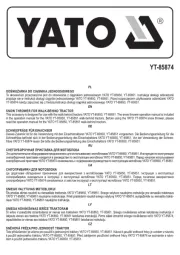
15 Juli 2025
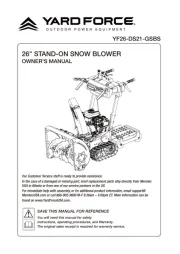
20 Mei 2025
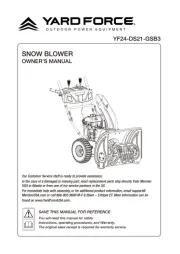
20 Mei 2025
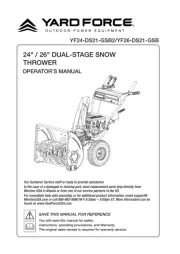
15 Mei 2025
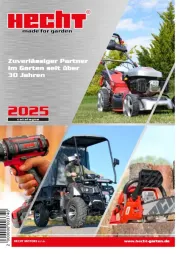
27 Januari 2025
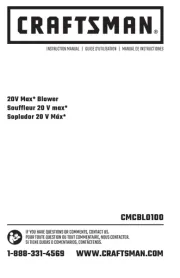
27 Januari 2025

9 December 2024

4 December 2024

4 December 2024
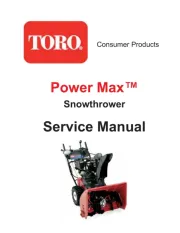
19 November 2024